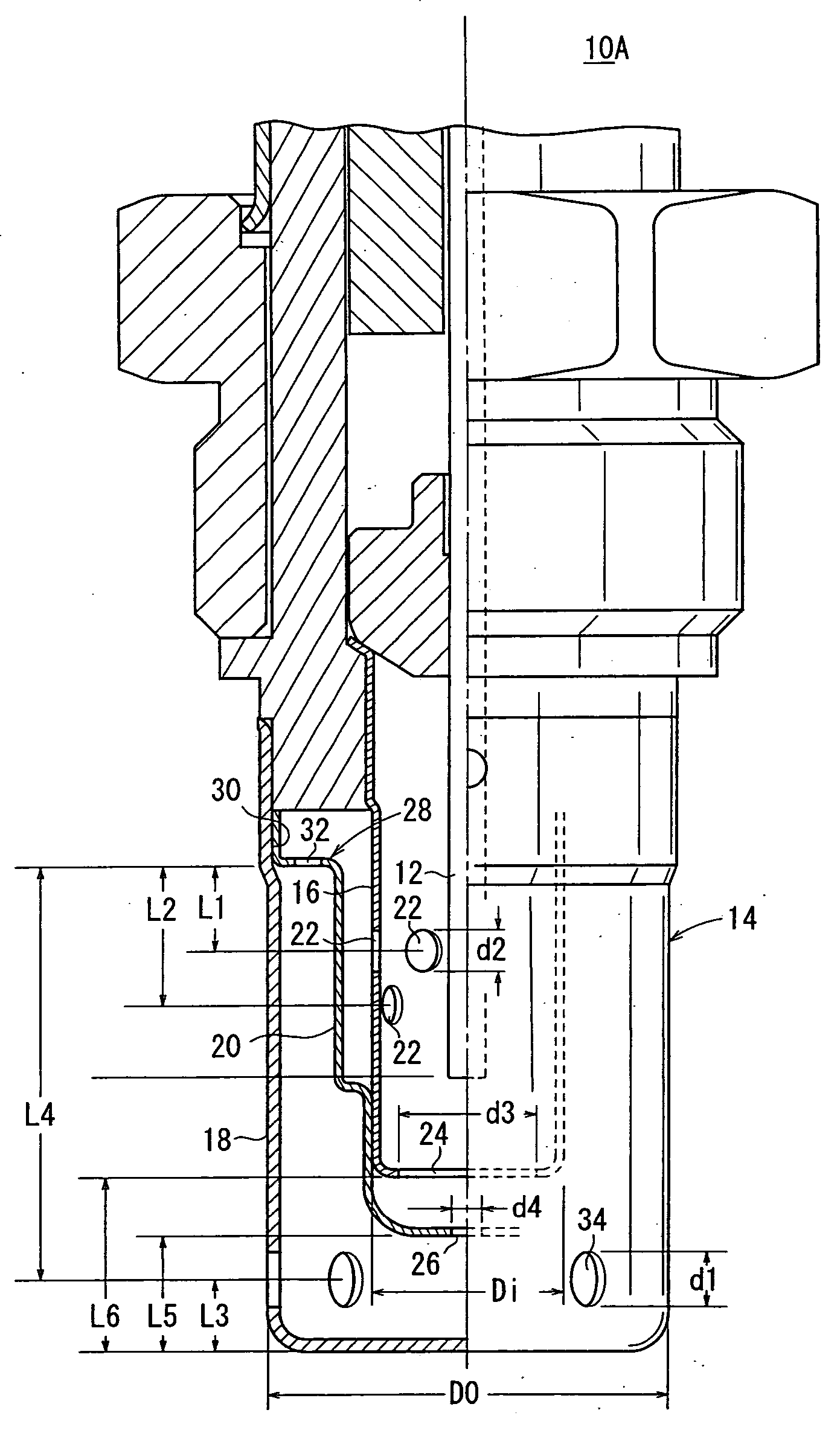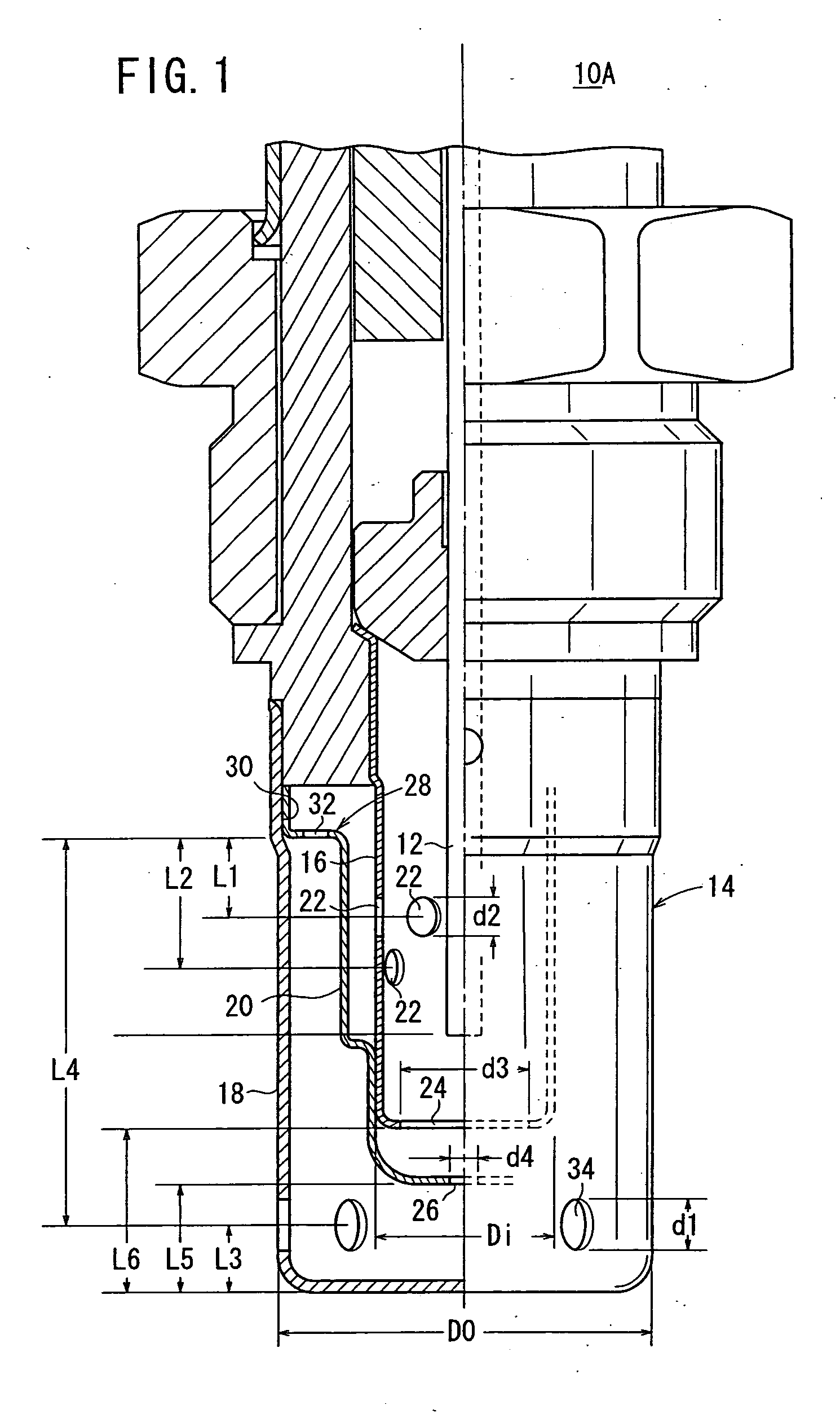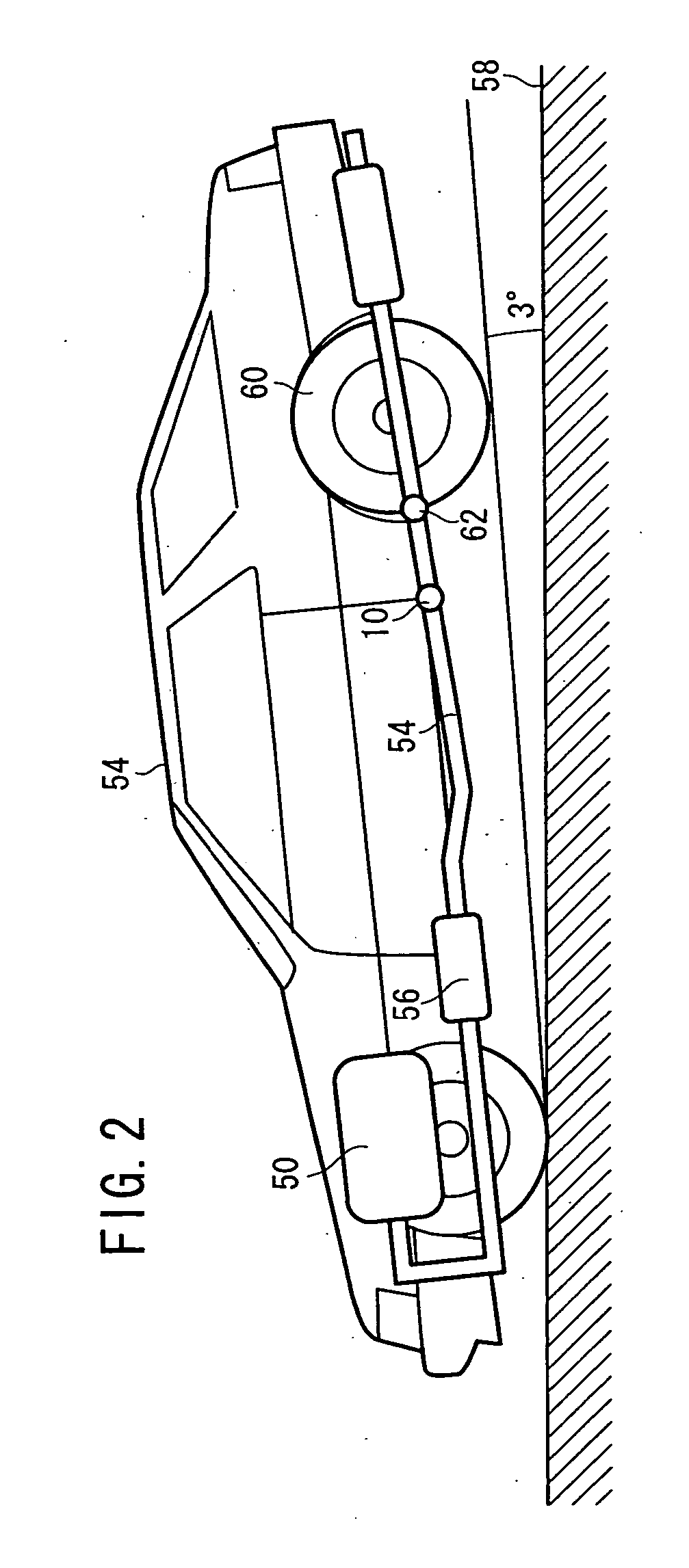Gas sensor
a technology of gas sensor and sensor element, applied in the field of gas sensor, can solve the problems of delay in response of gas sensor, water resistance, water resistance, etc., and achieve the effect of effective protection of the sensor element, and reducing the temperature change of the sensor elemen
- Summary
- Abstract
- Description
- Claims
- Application Information
AI Technical Summary
Benefits of technology
Problems solved by technology
Method used
Image
Examples
first embodiment
As shown in FIG. 1, a gas sensor 10A comprises a sensor element 12 which measures a predetermined gas component, for example, NOx contained in a measurement gas (exhaust gas), and a protective cover 14 which is arranged to surround an end portion of the sensor element 12.
The sensor element 12 is constructed in the same manner as a sensor element described, for example, in Japanese Laid-Open Patent Publication No. 2000-304719 (see FIGS. 3 and 4 of this patent document). Therefore, the explanation thereof will be herein omitted.
In the gas sensor 10A according to the first embodiment, the protective cover 14 surrounding the sensor element 12 comprises an inner protective cover 16 which covers the end portion of the sensor element 12, an outer protective cover 18 which covers the inner protective cover 16, and an intermediate protective cover 20 which is installed between the inner protective cover 16 and the outer protective cover 18.
The inner protective cover 16 is formed of met...
example 1
was constructed such that the ratio A1 / A2 was not less than 1, and the diameter of the outer gas inlet holes 34 was smaller than that of Comparative Example 2 was prepared such that the ratio A1 / A2 was not less than 1, and the number of the inner gas inlet holes 22 was larger than that of Comparative Example 1. Example 3 was prepared in the same manner as the gas sensor 10A according to the first embodiment described above, in which the ratio A1 / A2 was not less than 1, the diameter of the outer gas inlet holes 34 was smaller than that of Comparative Example 1, and the number of the inner gas inlet holes 22 was larger than that of Comparative Example 1.
FIG. 6 shows results of the measurement of wetting, and FIG. 7 shows results of the measurement of the temperature change of the sensor element 12. In FIG. 7, left bars indicate the cases of the standard attachment, and right bars indicate the cases of the inclined attachment.
FIG. 6 shows the result of measurement of wetting. In the ...
second embodiment
Next, a gas sensor 10B will be explained with reference to FIG. 18.
The gas sensor 10B according to the second embodiment is configured in approximately the same manner as the gas sensor 10A according to the first embodiment described above. However, as shown in FIG. 18, the gas sensor 10B is different from the gas sensor 10A in that plate sections 40 are provided for the inner protective cover 16 to extend over rectangular inner gas inlet holes 22, and the number of the inner gas inlet holes 22 is six.
Further, the gas sensor 10B is also different from the gas sensor 10A in that the flange section 28 of the intermediate protective cover 20 is positioned lower than that in the first embodiment, and the positional relationship of the outer gas inlet holes 34, the slits 32, and the inner gas inlet holes 22 is established such that the outer gas inlet holes 34, the slits 32, and the inner gas inlet holes 22 are arranged in this order from the bottom to an upper part of the outer prot...
PUM
 Login to View More
Login to View More Abstract
Description
Claims
Application Information
 Login to View More
Login to View More - R&D
- Intellectual Property
- Life Sciences
- Materials
- Tech Scout
- Unparalleled Data Quality
- Higher Quality Content
- 60% Fewer Hallucinations
Browse by: Latest US Patents, China's latest patents, Technical Efficacy Thesaurus, Application Domain, Technology Topic, Popular Technical Reports.
© 2025 PatSnap. All rights reserved.Legal|Privacy policy|Modern Slavery Act Transparency Statement|Sitemap|About US| Contact US: help@patsnap.com



